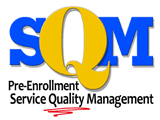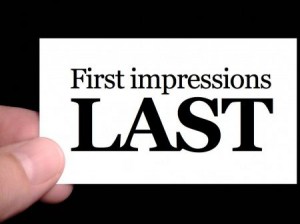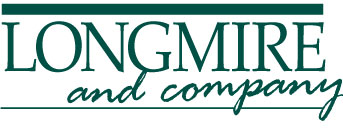 In the last post, we shed some light on the pre-enrollment service perception problem – the fact that colleges and universities are losing potential students due to poor service during the courtship phase. Our studies have revealed that multiple factors such as responsiveness, grounds, food, faculty and admissions personnel strongly shape a student’s overall opinion of the institution and ultimately influence their final decision of where to attend.
In the last post, we shed some light on the pre-enrollment service perception problem – the fact that colleges and universities are losing potential students due to poor service during the courtship phase. Our studies have revealed that multiple factors such as responsiveness, grounds, food, faculty and admissions personnel strongly shape a student’s overall opinion of the institution and ultimately influence their final decision of where to attend.
With so many contributing factors, it can be a challenge knowing where to start on a pre-enrollment customer service improvement initiative. Well, the first step is to take a baseline measurement to determine where you stand now vs. where you need be. One college president at a major Eastern university summed it up like this, “We invest millions of dollars in recruitment and yet we discovered that there were changes that cost very little that greatly impact our efforts.”
Don’t risk wasting time, energy and money on initiatives that won’t pay off. Here we’ve outlined some simple steps to help you establish a true baseline and craft a strategic plan for success.
1) Ask Questions
More specifically, ask the right people the right questions, at the right time. This means you’ll want to keep the channel of communication open and working with prospective students and parents from the first moment of contact.
As for the questions, try to elicit feedback about their experiences during all touch points of the process. For example, you may want to include a set of questions about their pre-visit experiences with you, another set of questions about campus cleanliness and security, another set of questions about follow up, and so on. Build anonymity into your surveys so students and parents can be completely candid and not feel that they are burning bridges by being brutally honest with you.
Eliciting categorized responses will help later when you decide which initiatives to focus on for maximum impact. Also give respondents the opportunity to share other thoughts, or open-ended feedback, to help you identify the issues that are most important them.
2) Compare and Contrast
Use the data from your surveys to compare and contrast your institution with others on multiple factors. This will help you identify unique strengths and opportunities where you can stand out from your competitors. At the same time, it can focus your efforts where they will be most effective in the overall marketplace.
3) Make a plan
Establish a procedure to resolve issues that are identified through your data, then stick to it. One of our clients who enjoys consistently high marks maintains a dedicated ‘regulator’ who is responsible for handling any problems or complaints that surface during the process. This ombudsman will relay information to the departments or parties concerned, assign tasks and track progress until the issue is resolved.
They also make contact with the student involved to allay any concerns and reassure them of the institution’s commitment to their satisfaction. University staff is acknowledged and rewarded for making positive changes and for their efforts in creating a welcoming environment for prospective students and their families.
4) Engage Everyone
In order for real transformation to occur, every member of every department must be apprised of the plan and committed to creating a more positive experience. Certainly, interactions with faculty, admissions and financial aid are critical, but many schools are surprised to find the impact that campus maintenance, grounds keeping, security and even the switchboard operators can have on establishing an impression. Imagine the institution as a very large rowboat, where each individual rower is moving in harmony with hundreds of other rowers, propelling the craft swiftly and seamlessly through the water. With everyone working toward the same goals, progress will be inevitable, and apparent to your prospects.
 Longmire and Company conducts pre-enrollment customer service surveys for colleges across the country. We are more than happy to share the nationally aggregated data we’ve collected and initiatives that colleges have successfully implemented to deliver improved customer service. Just give us a call at (913) 492-1265 or send us a request using our Contact Us page.
Longmire and Company conducts pre-enrollment customer service surveys for colleges across the country. We are more than happy to share the nationally aggregated data we’ve collected and initiatives that colleges have successfully implemented to deliver improved customer service. Just give us a call at (913) 492-1265 or send us a request using our Contact Us page.
 In our workshop, we conduct a role-playing exercise called “Fill The Buckets” in which a counselor must spend no less than 10 minutes asking questions of a “student” (who is played by another participant in the workshop). The counselor can open any conversational bucket they wish in an effort to understand the student’s needs, preferences and motivations. Open a bucket about parents? That’s okay. Major interest? Okay, too. Other schools under consideration? No problem.
In our workshop, we conduct a role-playing exercise called “Fill The Buckets” in which a counselor must spend no less than 10 minutes asking questions of a “student” (who is played by another participant in the workshop). The counselor can open any conversational bucket they wish in an effort to understand the student’s needs, preferences and motivations. Open a bucket about parents? That’s okay. Major interest? Okay, too. Other schools under consideration? No problem. We know that impressions are formed from the first moment of contact with a prospective student and span across all brand touch points including every department, staff member, faculty member and even other students. What we didn’t know was just how critical those first impressions are. The study shows that a single bad experience can be the catalyst for completely derailing the prospective student’s original enrollment plan. Moreover, the study concludes that offering great pre-enrollment service will not only “save” enrollments but it is also one of the best possible ways for a college or university to differentiate itself in today’s competitive environment. The goal is not only to meet expectations but to exceed them.
We know that impressions are formed from the first moment of contact with a prospective student and span across all brand touch points including every department, staff member, faculty member and even other students. What we didn’t know was just how critical those first impressions are. The study shows that a single bad experience can be the catalyst for completely derailing the prospective student’s original enrollment plan. Moreover, the study concludes that offering great pre-enrollment service will not only “save” enrollments but it is also one of the best possible ways for a college or university to differentiate itself in today’s competitive environment. The goal is not only to meet expectations but to exceed them.
